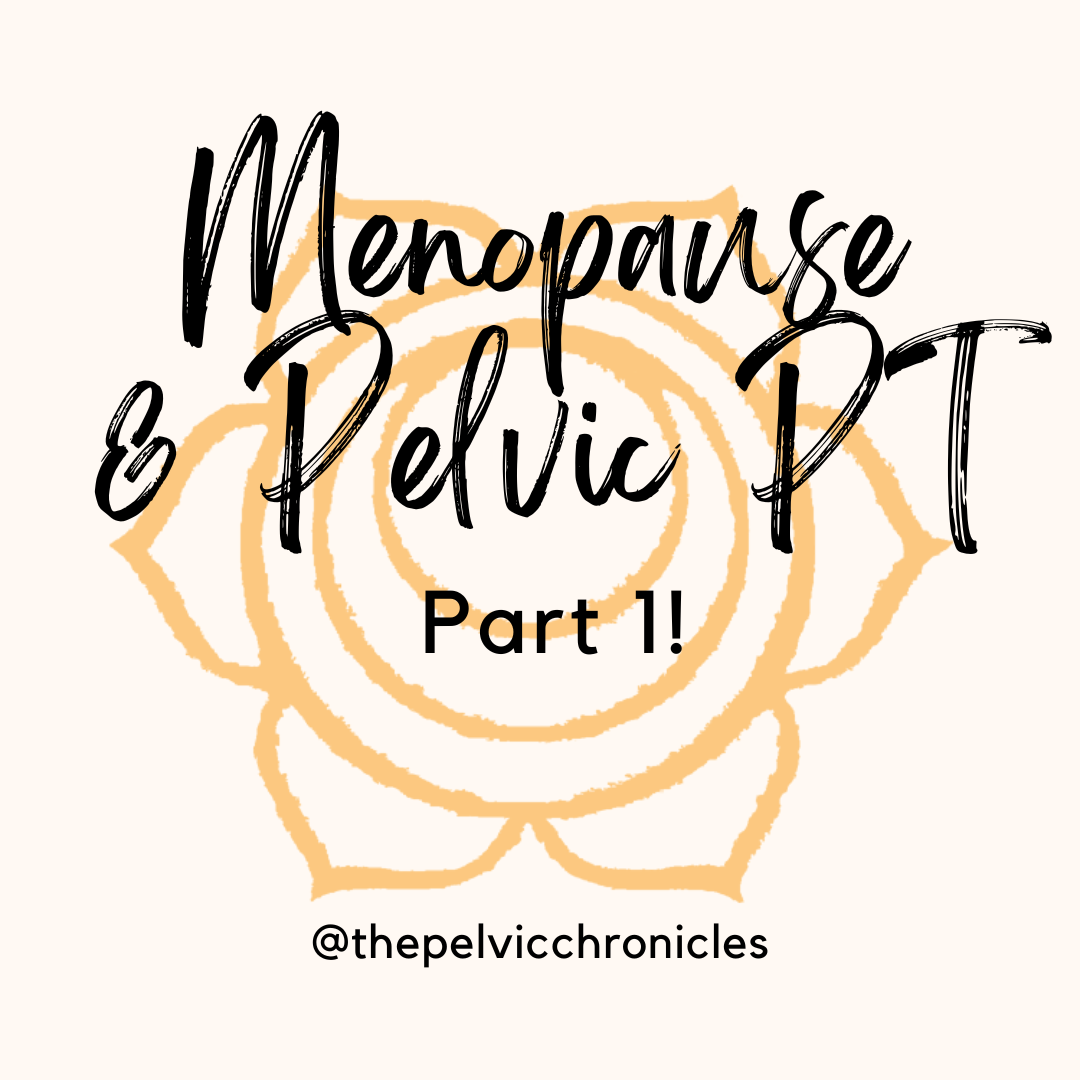Menopause is a point in time. It is when you have stopped having a period…

Menopause and Pelvic Physical Therapy: Blog Series Part 1
As women, we often talk about all that happens with pregnancy and post-partum. What we do not hear about is what our bodies go through during menopause. I want to spend some time discussing menopause and the changes and transitions that occur during this time. Before we do that, let’s begin to understand what menopause is and what happens during this time in our lives.
There are three stages of menopause: perimenopause, menopause, and post-menopause.
Perimenopause usually starts in our mid-40s but can start as early as our late-30s or as late as early-50s. This transition time usually lasts about 4 to 8 years depending on genetics, general health, medical treatments, and nutrition. During this time, we transition out of our reproductive years with physical and hormonal changes. The defining symptom during this time is irregular menstrual cycles. Some women will also start to experience hot flashes, mood swings, and physical changes with skin and hair thinning.
Menopause officially starts when we have not had a menstrual cycle for 12 consecutive months.
Post-menopause is the time after we have not had a menstrual cycle for over 1 year. During this time in our lives, the risk for heart disease and certain types of cancers goes up primarily due to the decreased presence of estrogen and progesterone. Physical symptoms that may start in perimenopause and become more pronounced during postmenopause include:
- vaginal dryness
- pain with intercourse
- urinary incontinence
- joint pain
- fatigue
- insomnia
- hot flashes
- mood swings
- brain fog
- anxiety and depression
Sounds like a fun list huh? But seriously, every woman will experience the transition of menopause differently and we want to support each woman based on the symptoms that she is experiencing. Understanding what menopause is will allow for a better understanding of the physical and emotional changes that we experience.
Over the next few weeks, I am going to continue to build on what to expect during menopause, look more into the physical changes during this time, and what we can do to alleviate symptoms from painful sex, urinary incontinence, and fatigue and joint stiffness. The more we understand what is going on, the less anxiety these changes are producing. Pelvic floor physical therapy can play a role in your healthcare needs during this time in helping to manage symptoms and understand why these symptoms are occurring in the first place.
We offer a free 15 minute phone consultation to answer questions and determine if pelvic floor physical therapy is right for you. Click Here to Schedule.




